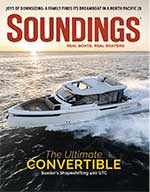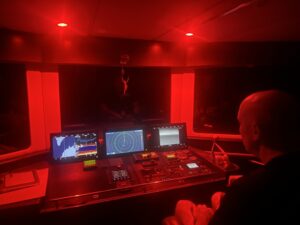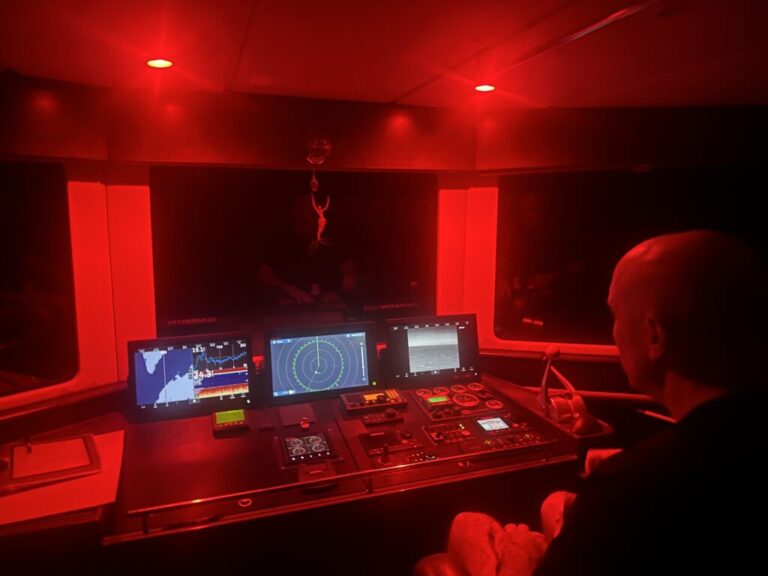
If the size of a boat’s battery bank is increased or the type of battery is changed, the engine alternator might have to be upgraded to a higher-amp model. The alternator upgrade must be calculated using the battery bank’s acceptance rate so the charge rate matches. This calculation is more difficult to determine on sailboats because most sailors prefer to limit engine running time, which typically results in deeper discharge rates on the house bank.
In general, the alternator should be capable of delivering rated output equal to the maximum acceptance rate of the house battery bank. This means the alternator’s rating should be approximately 25 percent of the total battery capacity for flooded batteries, 30 percent for gel and 45 percent for AGM. When sizing the replacement alternator, consider the type of battery, cumulative amp hour rating and engine time to recharge the bank. These considerations will prevent overloading (and overheating). Conventional flooded-cell, absorbed glass mat, gel and thin-plate pure lead batteries have different bulk-charge rates when discharged, which means they may “ask” for more or less current — measured in amps — for a satisfactory recharge. These calculations must be done before purchasing a replacement alternator

The stock alternator provided with marine engines is similar to those used in automobiles, with an internal regulator and a linear output. The faster it turns, the more current is available. A custom alternator with a “smart” regulator can maximize charging at less than full engine speed. It also can be tailored to suit the voltage requirements of the battery type for charging.
As the electrical load increases, the mechanical demands increase proportionally, so you may need a larger or different type of belt. Calculate pulley sizes so the alternator speed is at the manufacturer’s recommended maximum at your engine’s full-throttle rpm. This will allow the alternator to produce as much current as possible. I have seen installations where the pulley was too big, and it negated the expense and installation of a larger alternator.
Alternators are rated cold and immediately experience a reduction in output upon getting hot, so size them accordingly to allow for this. The cooling fans typically move air through the unit from the rear and out the front. Some alternator fans are directional, so check with the supplier to ensure adequate cooling.
About the author: Roger Hellyar-Brook runs a marine consulting business, repairing and upgrading boats of all types. He has spent more than 40 years in the marine industry and is the former manager of the systems program at The Landing School in Arundel, Maine.
About the illustrator: Paul Mirto is a digital illustrator, longtime boater and former Coast Guardsman. mirtoart.com
Interested in engines? Take an online course with expert Steve Zimmerman at boatuniversity.com
This article originally appeared in the October 2017
issue.










